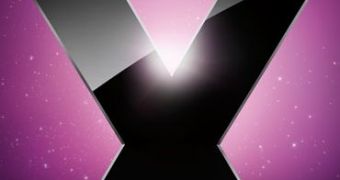When Microsoft made available Service Pack 2 for Windows XP, it pulled away resources from Windows Vista in order to sustain the effort, and came out with a service pack that many considered it could have been passed for a new Windows operating system. "Other companies would have called this a major release and charged money for it," Jim Allchin, (Former) Co-President, Platforms & Services Division, said on January 24, just before Windows Vista hit the shelves. Well, the Redmond company has a thing or two to learn from Apple, as the Cupertino-based hardware company is doing it again. This time around, with Snow Leopard.
Apple is getting ready in "about a year" to release the next version of what it claims to be the world's most advanced operating system. Sure enough, after what it had been through in 2007, Windows Vista, even with SP1 is no contest for Mac OS X 10.5 Leopard. Snow Leopard, the successor of plain vanilla Leopard will take the focus away from adding new features and will instead increase performance and quality. The first lesson that Microsoft needs to learn is that marketing makes or breaks a successful product.
Steven Sinofsky, Senior Vice President, Windows and Windows Live Engineering Group, should really pay attention to this one. The only thing worse than chattering about a product in development without a strategy is not talking about it at all. It wasn't all the talk around Windows Vista back when it was referred to as Longhorn that ruined the operating system, it was Microsoft's failure to live up to its initial promise. Sinofsky's translucency tactics involve discussing a product only when its aspects are set in stone, under promising and overachieving. Well, with Windows 7, just as Snow Leopard, a year, a year and a half away, Microsoft needs to start talking about the next iteration of Windows more than just demonstrating multi-touch technology.
The Redmond company's 2008 Professional Developers Conference looks like an excellent occasion for Microsoft to deliver its first taste of Windows 7. Apple's Worldwide Developers Conference 2008 proved a great moment for the Cupertino company to give a sneak peek at Snow Leopard. A few generic details about the next iteration of Mac OS X were also provided. Just enough for end users to be satisfied without Apple having to say anything. In contrast, at the D6 - All Things Digital, Julie Larson-Green, Corporate Vice President, Windows Experience Program Management, refused to talk about the Windows 7 Taskbar that was clearly visible on one of the Demo machines. That's right! This is a clear example of the absurdity of Microsoft's translucent policy, as whatever happens with Windows 7, it's unlikely that the Taskbar will play any sort of critical role.
"Since 2001, Mac OS X has delivered more than a thousand innovative new features. With Snow Leopard, the next major version of the world's most advanced operating system, Mac OS X changes more than its spots, it changes focus. Taking a break from adding new features, Snow Leopard - scheduled to ship in about a year - builds on Leopard's enormous innovations by delivering a new generation of core software technologies that will streamline Mac OS X, enhance its performance, and set new standards for quality. Snow Leopard dramatically reduces the footprint of Mac OS X, making it even more efficient for users, and giving them back valuable hard drive space for their music and photos," Apple revealed.
Apple is essentially promising that Mac OS X Snow Leopard will be smaller, simpler, faster and better, and that's about it. The second lesson for Microsoft is that it also needs to make Windows 7 smaller, simpler, faster and better than Windows Vista. Be it the product of evolution or of a revolution in development, Windows 7 has to be clearly superior to both Windows Vista and Windows XP. With the sole difference that Microsoft cannot really afford to cut down features from the next version of Windows. Snow Leopard will bring to the table Grand Central, advanced Multicore technologies, Microsoft Exchange Support, support for 16TB (Terabytes) of RAM, QuickTime X, and OpenCL (Open Compute Library), taking advantage of the graphics processing unit (GPU).
What will Windows 7 sport? Well... multi-touch computing. This is all that Microsoft managed to confirm, even with Windows 7 dropping next year. Or is it? The Redmond company is continually refusing to talk about a deadline, or to commit to anything beyond three years after the general release of Windows Vista.
But, in addition to start the marketing campaign ahead of launch, and not wait to drop another Wow as Windows 7 hits the shelves, as well as deliver a superior Windows release to what is already available, Microsoft needs to get Windows 7 out there. One year ahead of launch Apple has already made available Snow Leopard to developers. Undoubtedly, Microsoft has already done the same with Windows 7 Milestone 1, the Redmond company's focus is wrong, and limited only to its largest and closest partners. Windows 7 pre-release builds need to be offered as soon as possible to let the feedback flow. Microsoft simply needs to gather, centralize and take into account feedback from a much wider ecosystem of users and developers, not just the traditional Windows testers. They need to go beyond Apple's PC Guy from the Get a Mac ads.

 14 DAY TRIAL //
14 DAY TRIAL //